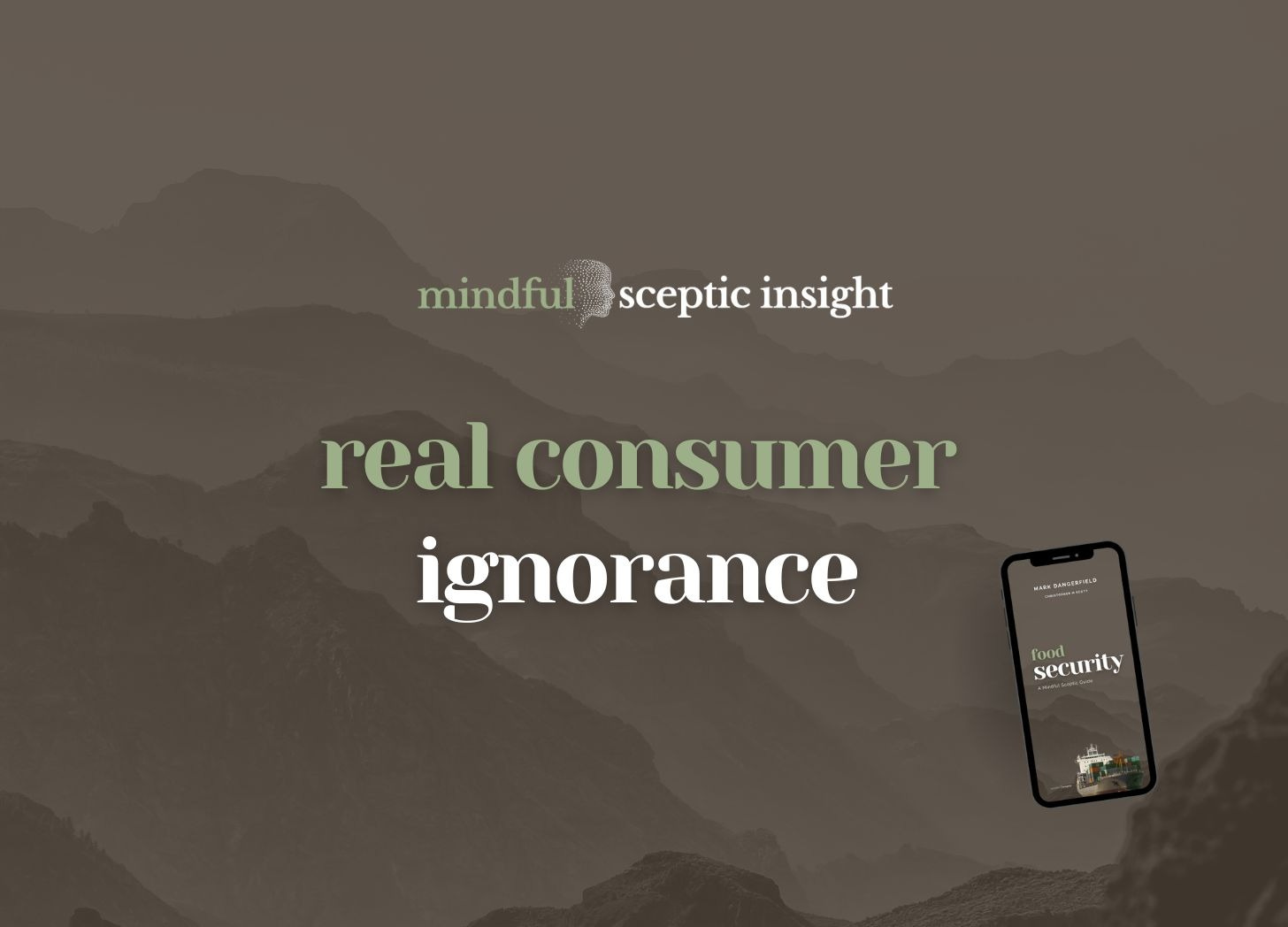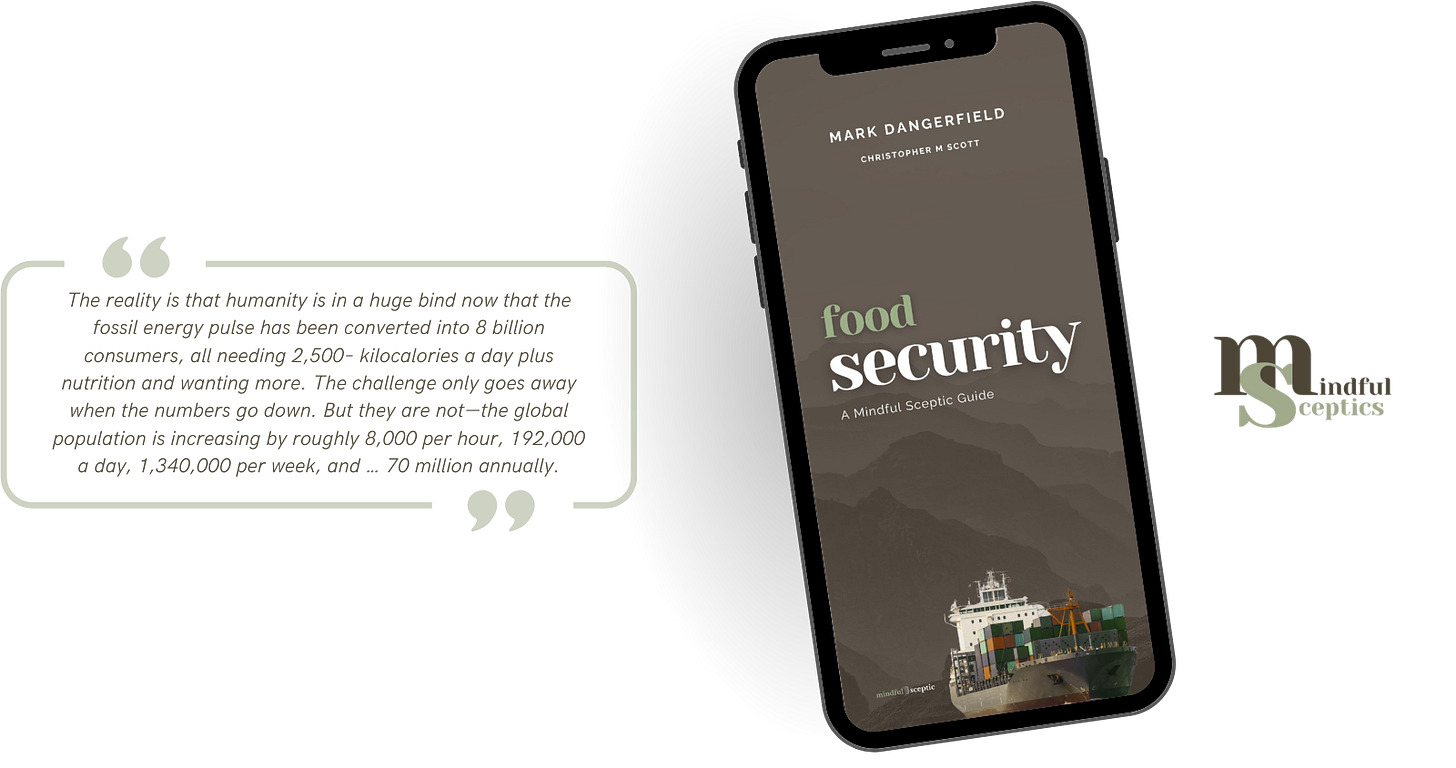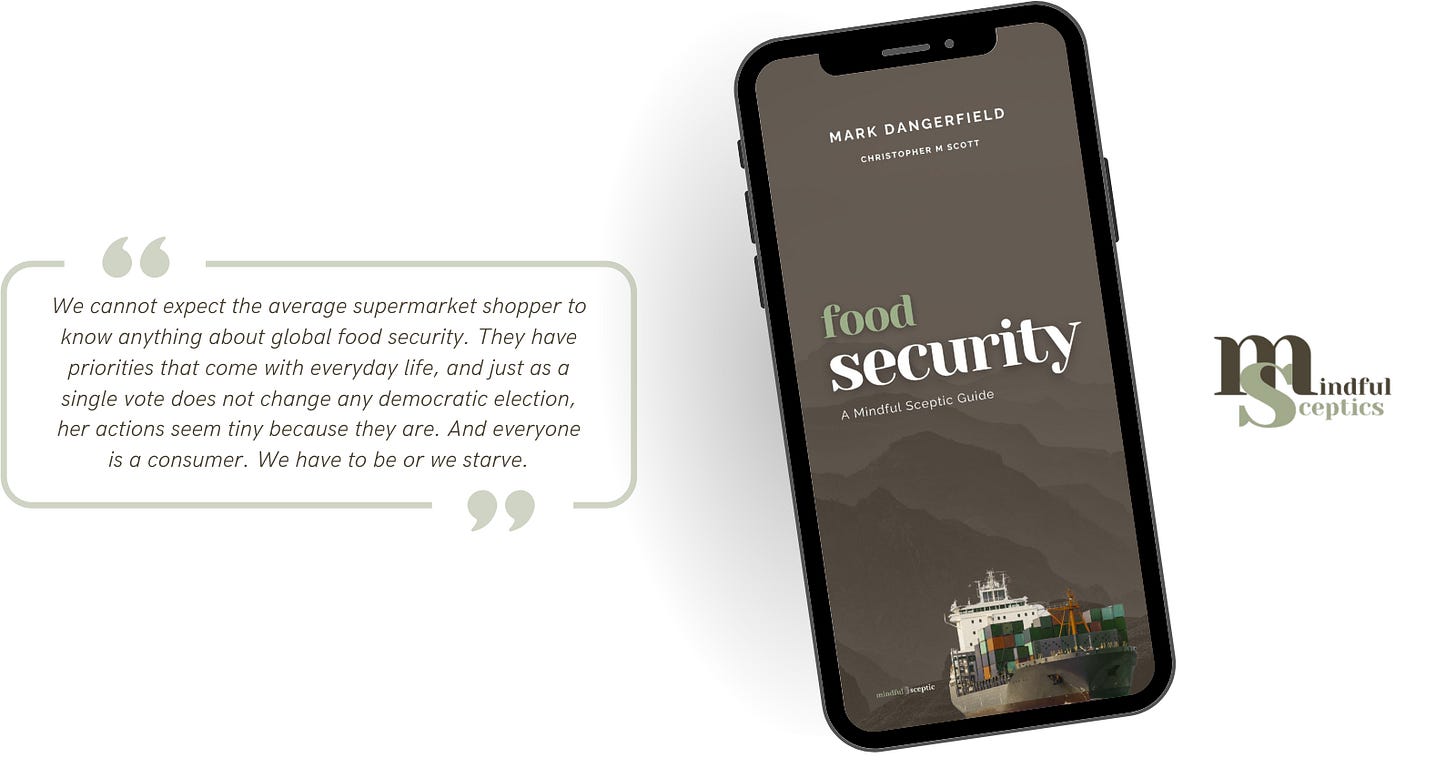Core Idea
Food writers, sustainable agriculture advocates, and local food movement evangelists all share the same sermon…. if only consumers knew where their food came from, if only they understood the true cost of industrial agriculture, if only they visited a farm or planted a garden, everything would change.
This narrative is seductive because it transforms a massive systemic crisis into a personal failing that education can fix.
But Jane, the everyday consumer, is a feature. Her disconnection from food production isn’t accidental oversight; it’s the inevitable result of an industrial food system that requires consumer ignorance to function.
When you have 8 billion people demanding 22 trillion kilocalories daily, the last thing you need is informed consumers asking awkward questions about soil depletion, fossil fuel dependency, or the real cost of cheap protein.
Counterpoint
The comfortable story we tell ourselves is that consumer education will save us.
Farm-to-table restaurants, farmers’ markets, and food documentaries represent our society’s attempt to reconnect people with their food sources.
We imagine that if Jane just understood the journey from farm to fork, she’d naturally make better choices. If she could see the depleted soils, witness the six-continent supply chains, comprehend the fossil fuel subsidies keeping her grocery bill low, she’d transform into a conscious consumer demanding sustainable agriculture.
This is nonsense.
Jane’s ignorance isn’t an accident of poor education or insufficient exposure to farming. It’s the logical outcome of a food system designed to feed billions of people who cannot possibly know the intimate details of their food production without the entire system grinding to a halt.
Consider the arithmetic.
Jane lives in a city of millions. She shops at supermarkets carrying 30,000 products sourced from thousands of farms across dozens of countries. Even if Jane possessed a PhD in agricultural science and spent her entire day researching, she couldn’t meaningfully understand the production systems behind her weekly grocery shop.
The cognitive load would be crushing. The information complexity would be paralysing.
More fundamentally, the industrial food system depends on Jane’s ignorance. If every consumer demanded detailed knowledge about soil carbon levels, water usage efficiency, pesticide applications, and labour conditions for every product they purchased, the transaction costs would make modern food distribution impossible.
We’d return to subsistence agriculture, which might feed 1 billion people if we were lucky.
The farm-to-table movement offers the illusion of connection while maintaining systemic disconnection. Wealthy urbanites can visit farmers’ markets, tour organic farms, and feel virtuous about their food choices. But these experiences represent a tiny fraction of the global food system.
The real action happens in places Jane will never see, like the massive grain operations in Argentina, industrial livestock facilities in North Carolina, processing plants in remote locations designed specifically to avoid consumer scrutiny.
Thought Challenge
Next time someone suggests that consumer education is the solution to food system problems, have them list every ingredient in their last meal and trace each one back to its specific farm of origin, including all inputs used in production. Time how long this takes and calculate the cost in research hours. Then multiply by 365 days and 3 meals per day.
Walk through a typical supermarket and count the products. Consider that each processed item represents multiple ingredients sourced from several locations. Calculate the total research burden if every consumer needed to make “informed” choices about every purchase. The math reveals why consumer ignorance isn’t a personal failing but a systemic necessity.
Closing Reflection
Jane’s ignorance about global food security is a feature that enables 8 billion people to eat without paralysing the entire system with information overload.
The real question isn’t how to educate consumers, but how to build food systems resilient enough to function while consumers remain necessarily ignorant about most of what they consume.
Clarity demands we stop blaming Jane for not knowing what she cannot possibly know and start designing systems that work despite human cognitive limitations.
Evidence Support
Kearney, M. (2010). Food consumption trends and drivers. Philosophical Transactions of the Royal Society B: Biological Sciences, 365(1554), 2793–2807.
TL;DR… reviews global drivers of food choice and consumption, emphasising how industrial food systems present hyperabundance while intentionally detaching consumers from production realities. The paper shows that, despite an increasing call for conscious consumption, the prevailing system emphasises efficiency and throughput over citizen knowledge or connection.
Relevance to insight… detachment and unawareness by consumers is maintained by the operational requirements of scale and efficiency in globalised food markets.
Fischer, C. G., & Garnett, T. (2016). Plates, pyramids, planet: Developments in national healthy and sustainable dietary guidelines – A state of play assessment. FAO & Food Climate Research Network, University of Oxford.
TL;DR… while some policy frameworks attempt to inform consumers, structural constraints of the supply chain and market incentives continue to undermine knowledge initiatives, highlighting systemic barriers to closing the “food literacy” gap. The paper concludes that large-scale food systems only superficially encourage consumer awareness to preserve business-as-usual throughput.
Relevance to insight… links the persistence of consumer ignorance to structural features and incentives of modern food processing, retailing, and distribution.
Spaargaren, G., Oosterveer, P., & Loeber, A. (Eds.). (2012). Food Practices in Transition: Changing Food Consumption, Retail and Production in the Age of Reflexive Modernity. Routledge.
TL;DR… synthesises research across the sociology of food, showing that supermarketization, branding, and logistics erase most supply-chain signals, treating consumers as “end-nodes” disconnected from broader social and ecological dynamics. Attempts at re-embedding consumers (e.g., food labels, ethical branding) are systemically limited or co-opted in ways that preserve the underlying disconnection.
Relevance to insight… central to understanding how “consumer ignorance” is a managed outcome of food system architecture intentionally designed for disconnection and efficiency, not fully reversible through information or choice alone.
Clapp, J. (2020). Food. Polity Press.
TL;DR… systemic analysis of global food arrangements, showing how concentration in agri-business, processing, and retail intentionally distances consumers from knowledge about origins, real nutritional value, and production practices. Her work details how structural intermediaries obscure information, thus enforcing consumer passivity.
Relevance to insight… demonstrates that consumer lack of knowledge is the result of deliberate distancing and complexity built into the supply chains and market logic of the food system.
Lang, T., & Heasman, M. (2015). Food Wars: The Global Battle for Mouths, Minds, and Markets. Routledge.
TL;DR… case studies and supply chain mapping to reveal how policy, economics, and technology collude to keep consumers uninformed and disengaged, despite superficial attempts at education and ‘choice.’ They argue that the design of food environments and retail intentionally shapes consumer ignorance.
Relevance to insight… empirical and theoretical backing that disengagement is engineered and maintained by structural incentives, supporting the insight’s contrarian edge.
Popkin, B. M., & Reardon, T. (2018). Obesity and the food system transformation in Latin America. Obesity Reviews, 19(8), 1028-1064.
TL;DR… rapid supermarketisation and food system change, the authors show how increased complexity, changes in retail environments, and aggressive marketing have disconnected consumers from food provenance and nutrition, fuelling poor choices and widespread ignorance.
Relevance to insight… epidemiological and social research illustrates how system structure—not individual failing—drives consumer confusion and disengagement, with direct effects on public health.
Garnett, T. (2014). Food sustainability: Problems, perspectives and solutions. Proceedings of the Nutrition Society, 73(1), 29-39.
TL;DR… how modern food systems systematically shape what consumers encounter and know, keeping real sustainability issues opaque and rendering information and responsibility invisible at the consumer end.
Relevance to insight… demonstrates, through sustainability and consumption findings, that consumer ignorance is intentionally produced by institutional features and broader system design.






